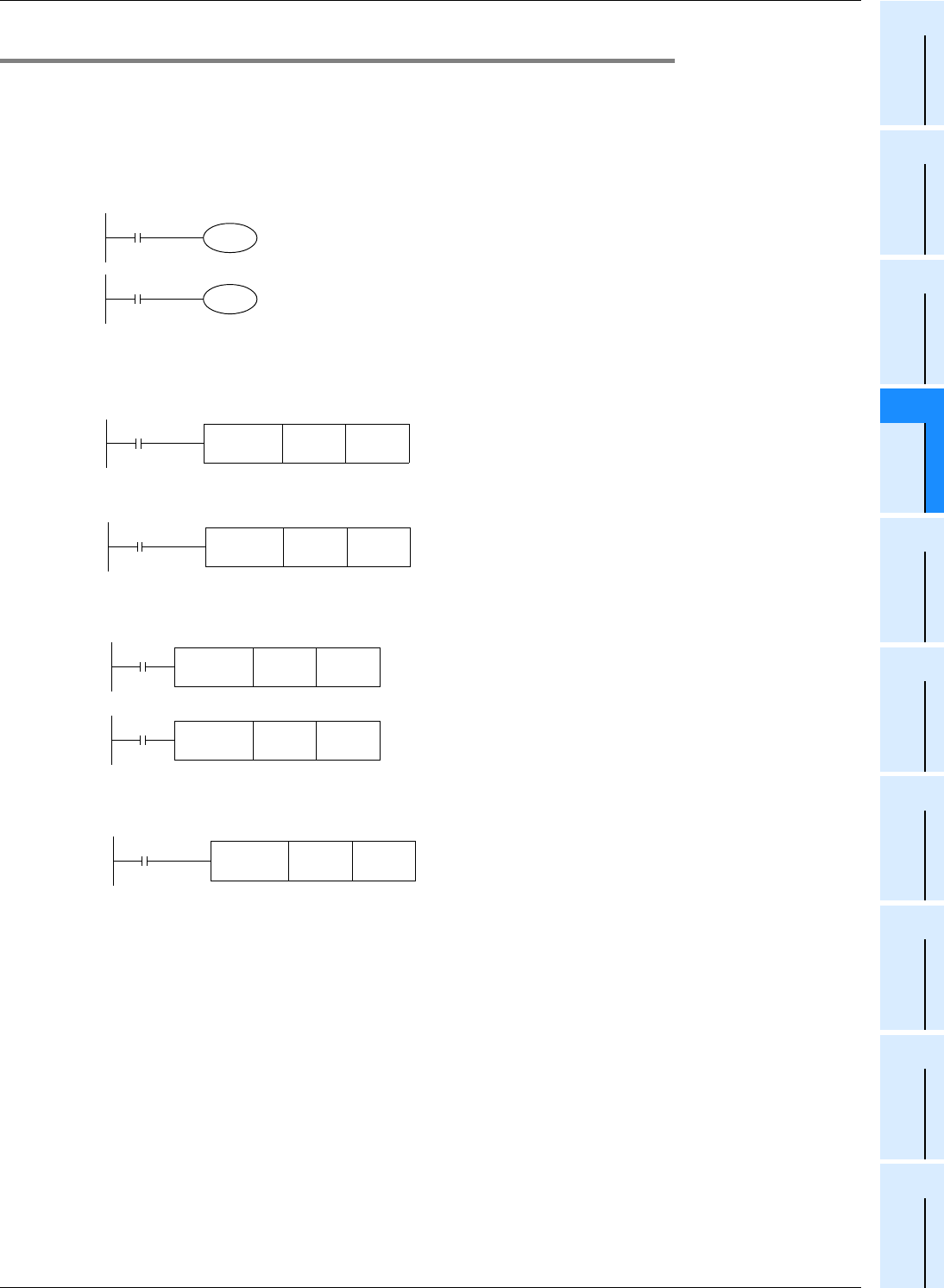
133
FX3G/FX3U/FX3UC Series Programmable Controllers
Programming Manual - Basic & Applied Instruction Edition
4 Devices in Detail
4.10 Extension Register [R] and Extension File Register [ER]
1
Introduction
2
Overview
3
Instruction
List
4
Devices
in Detail
5
Specified the
Device &
Constant
6
Before
Programming
7
Basic
Instruction
8
FNC00-FNC09
Program Flow
9
FNC10-FNC19
Move & Compare
10
FNC20-FNC29
Arith. & Logic
Operation
4.10.5 Functions and operation examples of extension registers
Extension registers can be used in various controls with numeric data the same as data registers.
This subsection explains operations in representative basic instructions and applied instructions among various
applications.
For the full use of extension registers, refer to the explanation of applied instructions described later.
1. Extension registers in basic instructions
• Specifying an extension register as the set value of a timer or counter
A counter or timer operates with regards to the contents of a
specified extension register as the set value.
2. Extension registers in applied instructions
Operation examples using MOV (FNC 12) instruction
• Changing the current value of a counter
The current value of the counter C2 is changed to the contents
of R5.
• Reading the current value of a counter to an extension register
The current value of the counter C10 is transferred to R4.
• Storing a numeric value to extension registers
"200 (decimal value)" is transferred to R10.
"80000 (decimal value)" is transferred to R10 and R11.
Because a numeric value larger than 32767, the 32-bit
operation (double D instruction) is required. When an
extension register on the low-order side (R10) is specified, an
extension register on the high-order side (R11) is
automatically occupied.
• Transferring the contents of a data register to extension register
The contents of D10 are transferred to R20.
T 2
R 0
C 10
R 20
FNC 12
MOV
R 5 C 2
FNC 12
MOV
C 10 R 4
FNC 12
MOV
K200 R 10
16 bits
FNC 12
DMOV
K80000 R10(R11)
32 bits
FNC 12
MOV
D 10 R 20


















